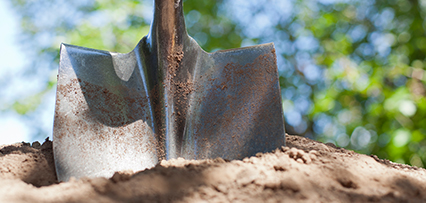
CALL 
Dig safe
Stay alert and look up Injury or possible death can result from contact with any overhead or underground power line, large or small. Even the service wires that run from utility poles to buildings and pumps are potentially dangerous. Keep yourself and all tools and equipment at least 10 feet away from overhead power lines. Only qualified line-clearance tree trimmers can work in the 10-foot safety zone. High voltages require a larger safety zone. Before work begins, your crew leader must brief you about power line voltages in your work area and the clearances required to get the job done safely.
Make the call |
Review these tips with coworkers at your tailgate or tool box meetings before work begins to help avoid potential hazards when working near underground utilities. 
You've called 811, and all buried utility lines on your job site have been located and marked. Now your power-digging work can begin, right? Not so fast. In California, before you can use power-digging equipment to cross a marked utility line or excavate within 24 inches from the outside edge of the line, you must hand dig to determine the line's exact location. Hand dig with care
Prevent muscle strain and injury Report all damage Would you like to know more? Do you like this email series? |
| #11304 |